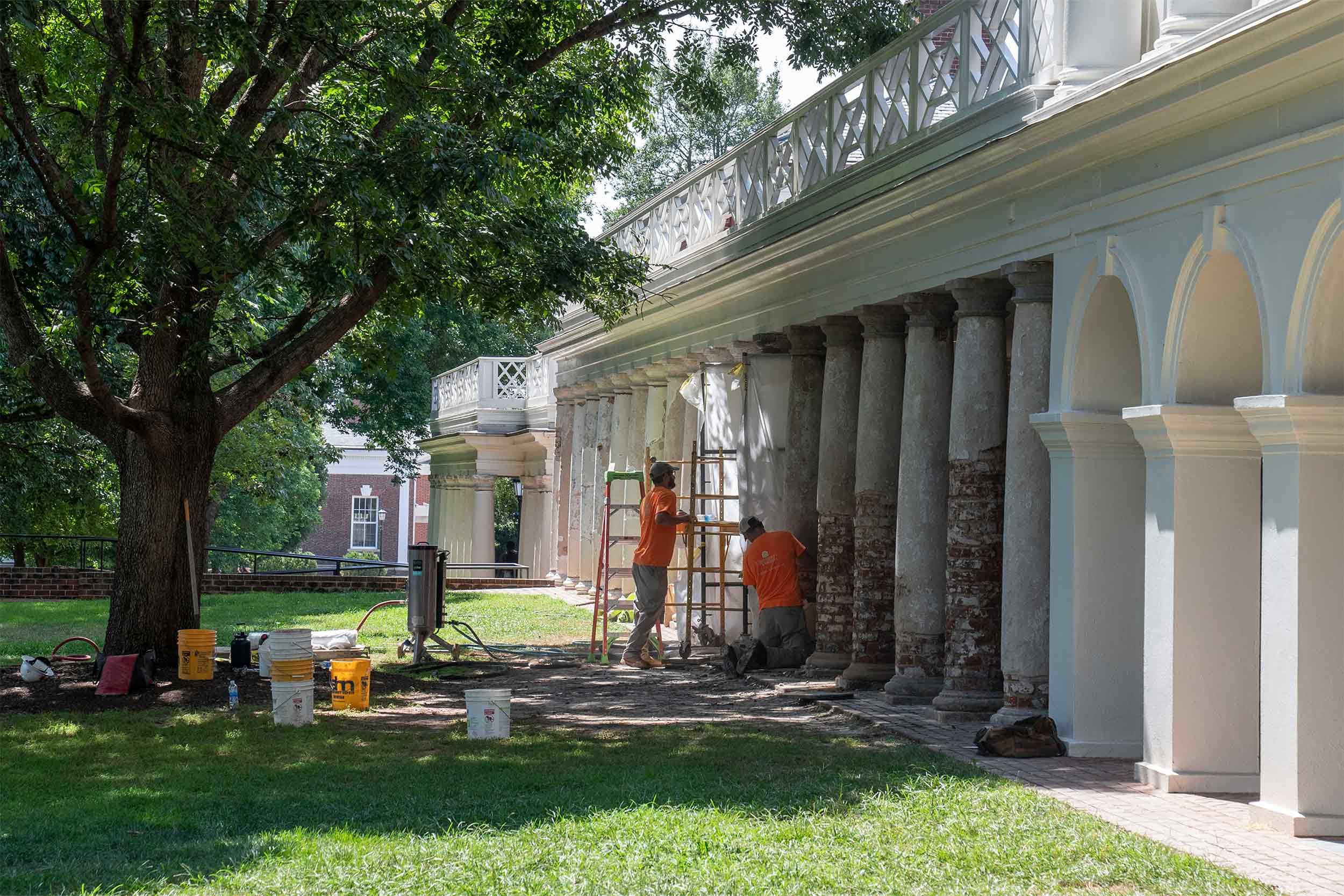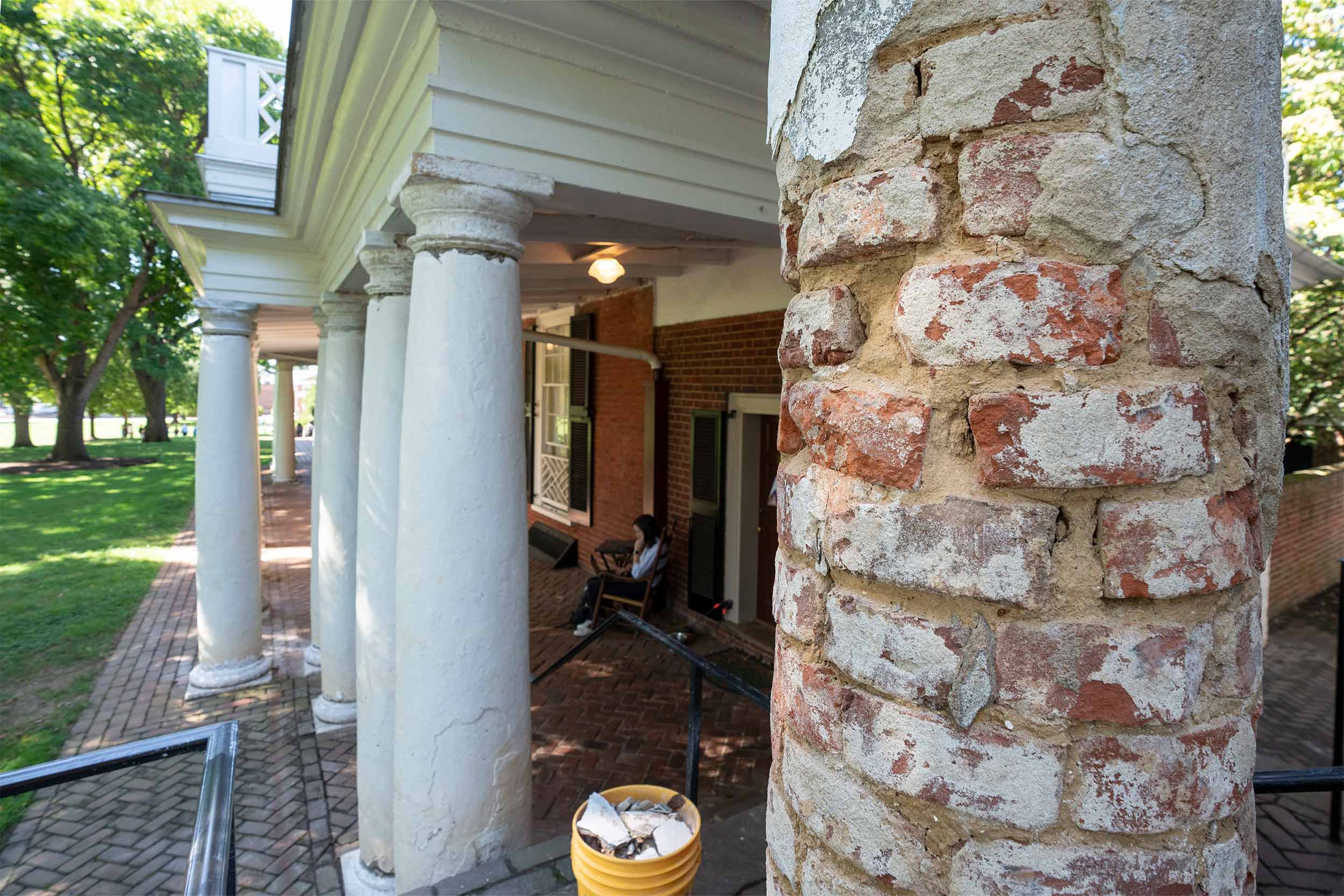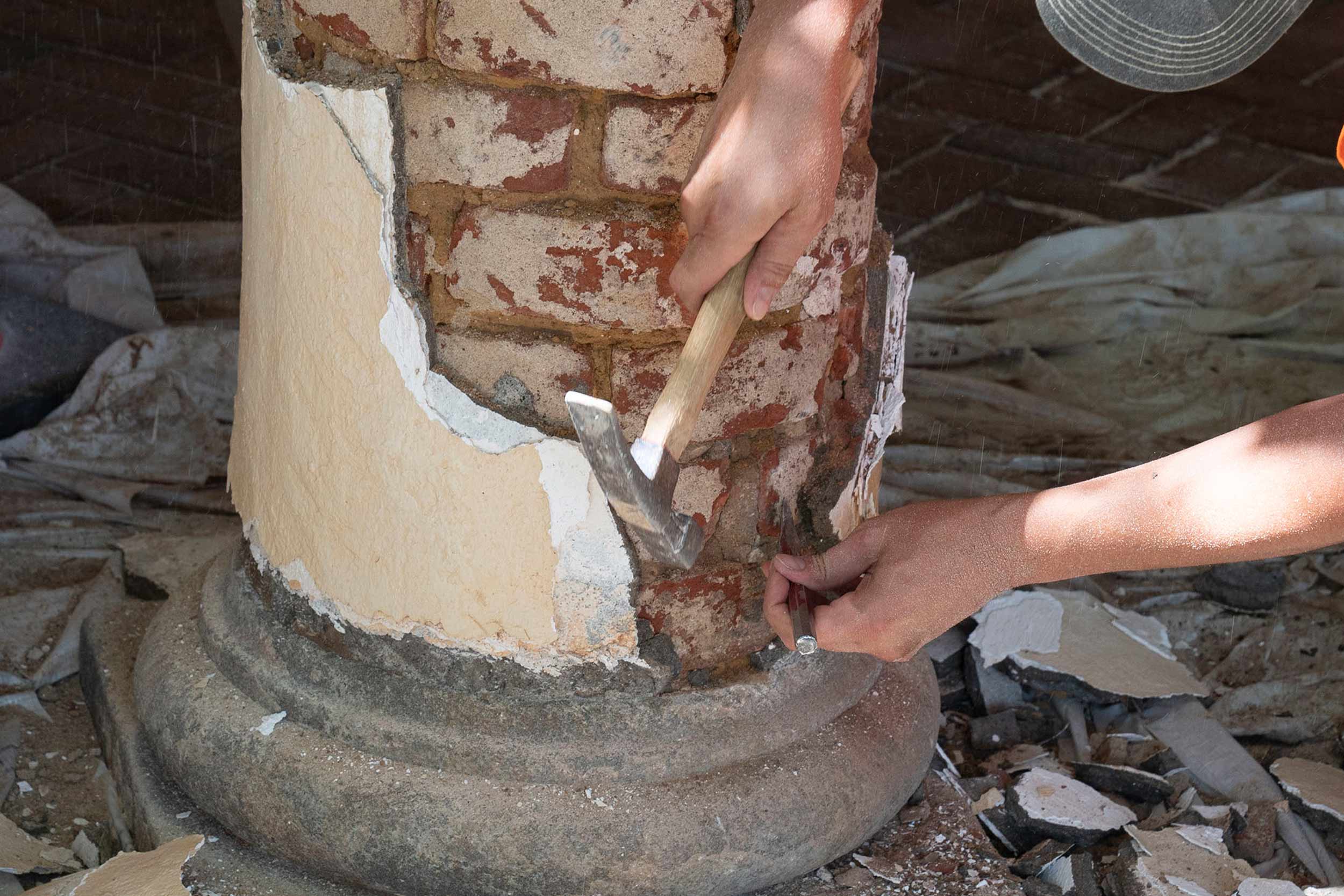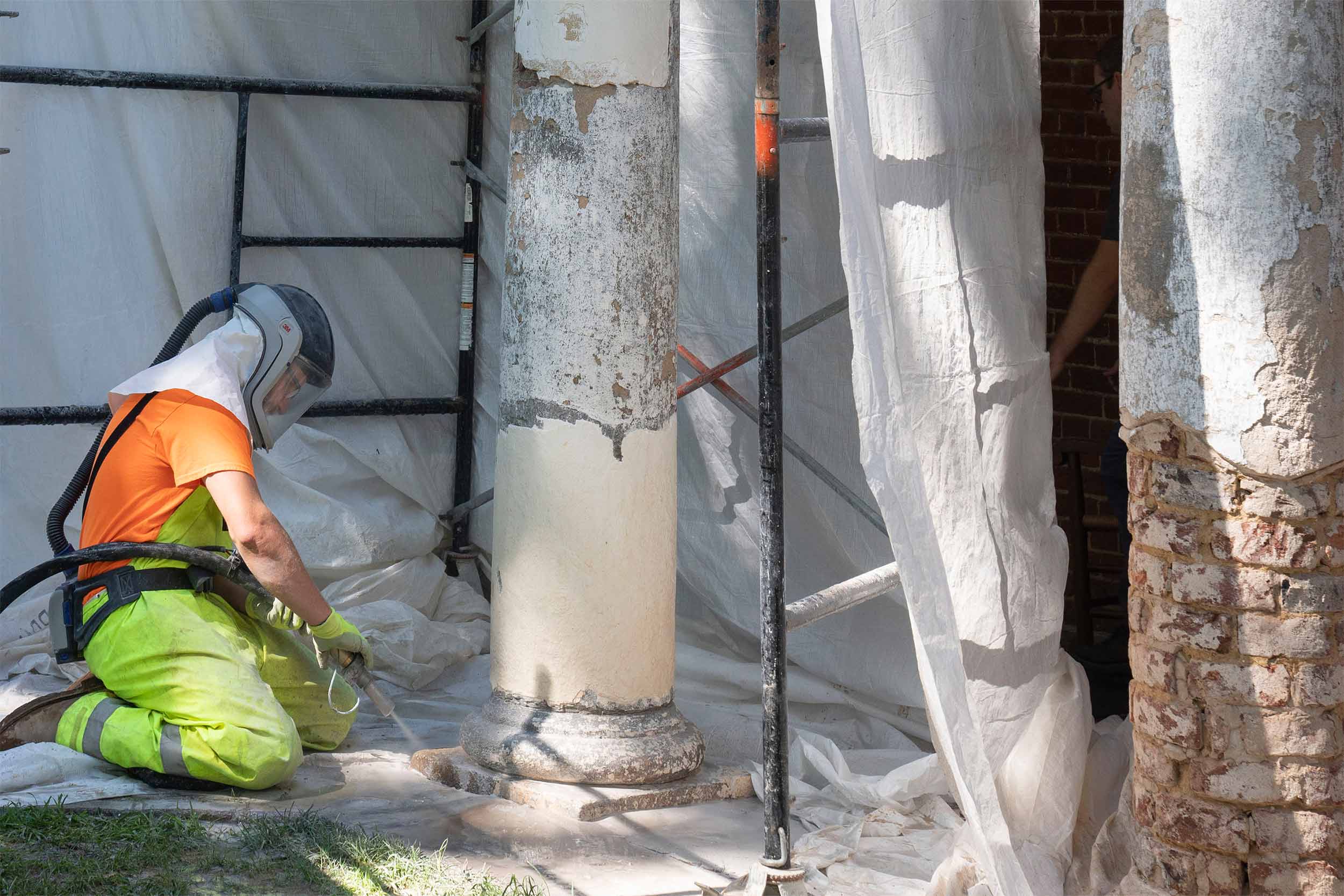For the Tuscan columns that line the University of Virginia’s historic Lawn, the future lies firmly in the past.
The columns, part of University founder Thomas Jefferson’s design for the Academical Village, have supported the terrace above the Lawn rooms for more than 200 years. Now, UVA’s historic masons are restoring them to their original condition – right down to the coats.
At their cores, the columns are brick – relatively soft, hand-made bricks, in fact – covered with a limestone render. The columns were initially unpainted, relying only on the color of the sand and lime to create their stone color. The earliest coatings applied to freshen up their appearance utilized a stone-colored, pigmented limewash. Over time, the pigment was left out and the limewash became a whitewash.








